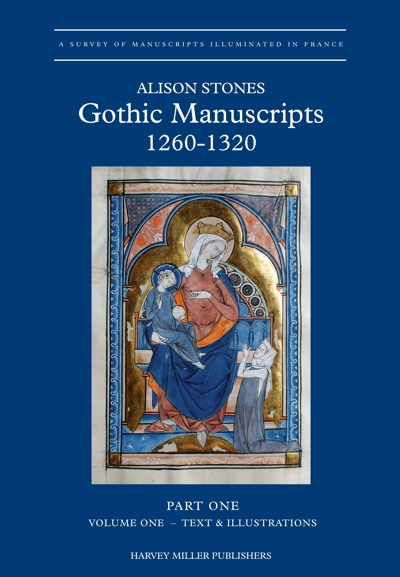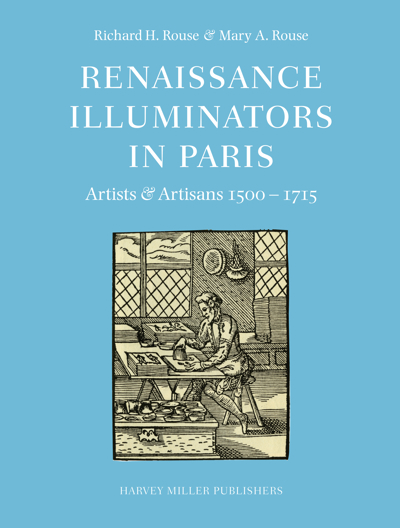
- Pages: 280 p.
- Size:220 x 280 mm
- Illustrations:65 col.
- Language(s):English, Latin, French
- Publication Year:2019
- € 140,00 EXCL. VAT RETAIL PRICE
- ISBN: 978-1-912554-28-7
- Hardback
- Available
“This book provides a vivid and complex picture of a ‘community of Parisian illuminators that survived the advent of the printing press for a great deal longer than anyone had a right to expect’ (p. 153). It will certainly become a valuable resource for socio-economic historians of late Renaissance and Baroque Paris, for art historians working on illumination and illuminators, and for scholars of book history and culture.” (Rosa Smurra, in Publishing History, 83, 2020, p. 100)
“(…) I hope that this book will trigger new research on this important artistic community and allow new discoveries to flourish.” (Céline Cachaud, in Palindromo, 2022, p. 295)
« (…) notamment étudiantes, tout chercheur ou amateur dans le domaine du manuscrit enluminé tardif consultera avec profit, si besoin en bibliothèque, ce qui est désormais une référence nécessaire et incontournable. » (MAXENCE HERMANT, dans Art de l'enluminure, 87, 2023, p. 60)
The commercial manuscript book-trade in Paris, that had begun as early as the mid-12th century, was severely disrupted by the arrival of the first printing presses in Paris around 1475. This new invention converted a traditional system of book production that had developed and flourished over the centuries from a handcraft to the mechanical printing press. It was a change that affected not only the livelihood of those who wrote the books and the artists who decorated them, but also the social life of the whole workforce involved in the production of books.
This publication traces the activities to which 16th- and 17th-century book artisans had to turn, faced as they were with a dwindling market for manuscripts. Those most affected were the illuminators and scribes who now had to seek alternative ways of making a living and so devise strategems for finding employment in other trades that would benefit from their skills. Thus the reader will discover well-known artists and illuminators finding jobs like adding illustrations to printed books, colouring wood-block prints and designing patterns and motifs for embroideries, tapestries and even glass and metal objects. A most interesting opportunity for illuminators was to get involved with the decorating of fans, a new fashion promoted late in the 17th century by the Sun King Louis XIV himself.
In addition to the richly illustrated text, the volume also includes a Register of more than 500 named Illuminators in alphabetical order, giving also their affiliation to their alternative trades and listing personal details including family members and professional associates.
The authors Richard and Mary Rouse, who are already widely known for their thorough research into the medieval book trade in Paris with their volume Manuscripts and their Makers, published a similar biographical Register of documented book producers up to the year 1500. With the present publication they are able to reconstruct how much the younger members and relatives of whole families of previous manuscript illuminators were able to continue to contribute to the now newly developing book-trade. This volume is therefore not only a contribution to the history of art and that of the book, but also provides a vivid glimpse into the social history of the period.
Acknowledgements
Publisher's Note
Introduction
PART ONE - Paris Illuminators in the Age of Print- a Métier Redefined
Chapter 1: The Continuation in the Illuminator's Trade in Renaissance Paris
I. An Uncertain Community
II. Illuminators, Painters and Illuminator/Painters
III. Redefinition by Qualification
IV. Lesser Hyphenations
V. Community or not? The Location of the Illuminator's Trade
VI. Common Threads
Chapter 2: Beyond Definition: Other Survival Strategies in the Illuminator's Trade
I. Illuminating the Printed Book
II. Second Jobs
III. Multi-Tasking
IV. Partnerships
V. Family
VI. Family Diversity
Chapter 3: Contracts and Inventories
I. Contracts
II. Post-mortem Inventories
Chapter 4: Apprenticeships
I. Norms of Apprentice Training
II. Apprenticing of Illuminator's Sons-and Daughters?
III. Why Did Apprenticeships Continue?
Chapter 5: The Vanishing Point?
Appendixes
1. University Suppôts, c. 1505-1518
2. Denial of an Illuminator's Guild, 1608
3. A Parisian Illuminator Hired at Chartres, 1546
4. An Apprenticeship Contract, 1541
PART TWO - The Register
Register of Parisian Illuminators and Artisans of the Manuscript Book 1500-1715
Glossary
Abbreviations
Bibliography
Handlist of Books and Documents
Index of the Manuscripts cited
List of Illustrations
General Index





